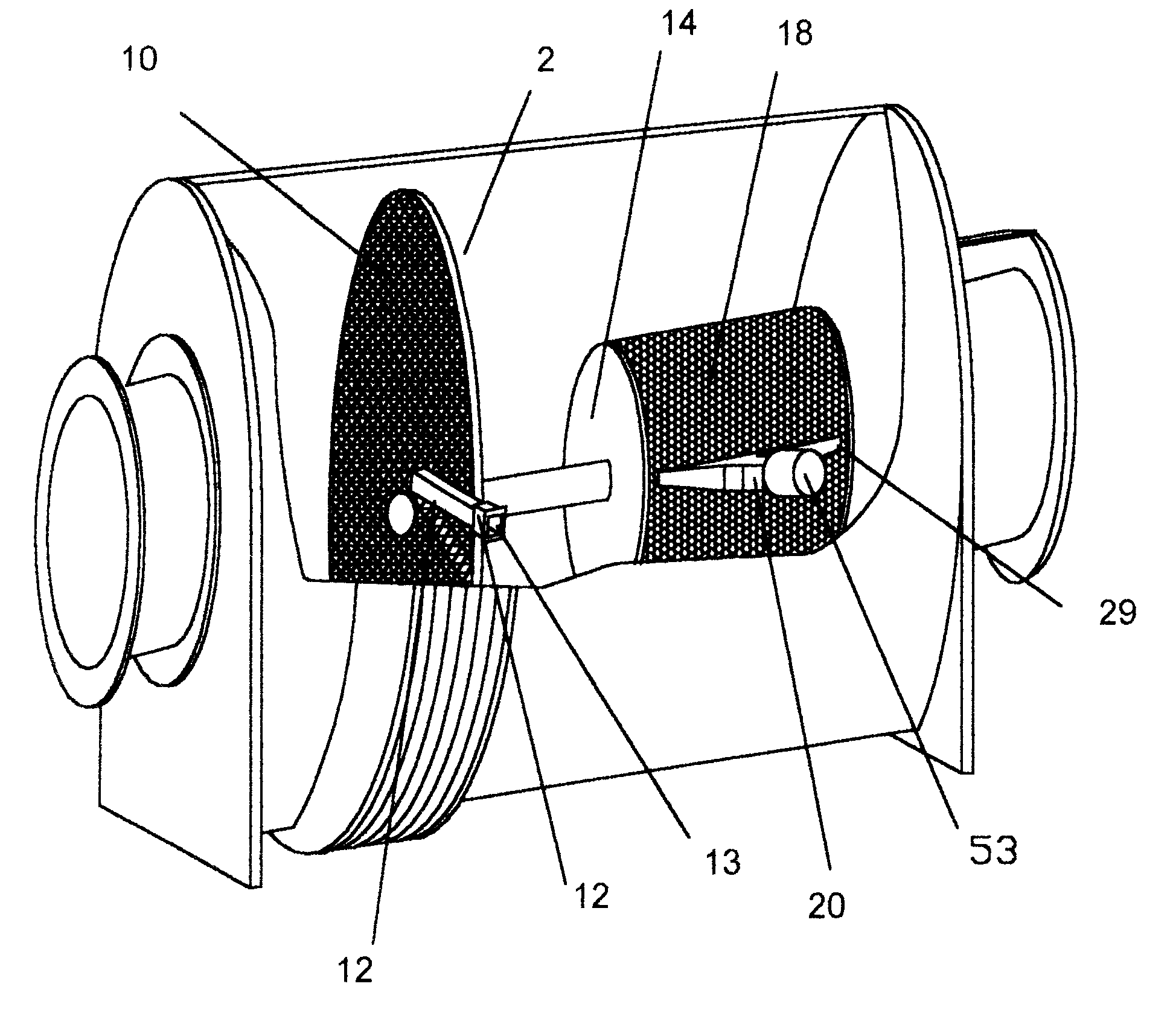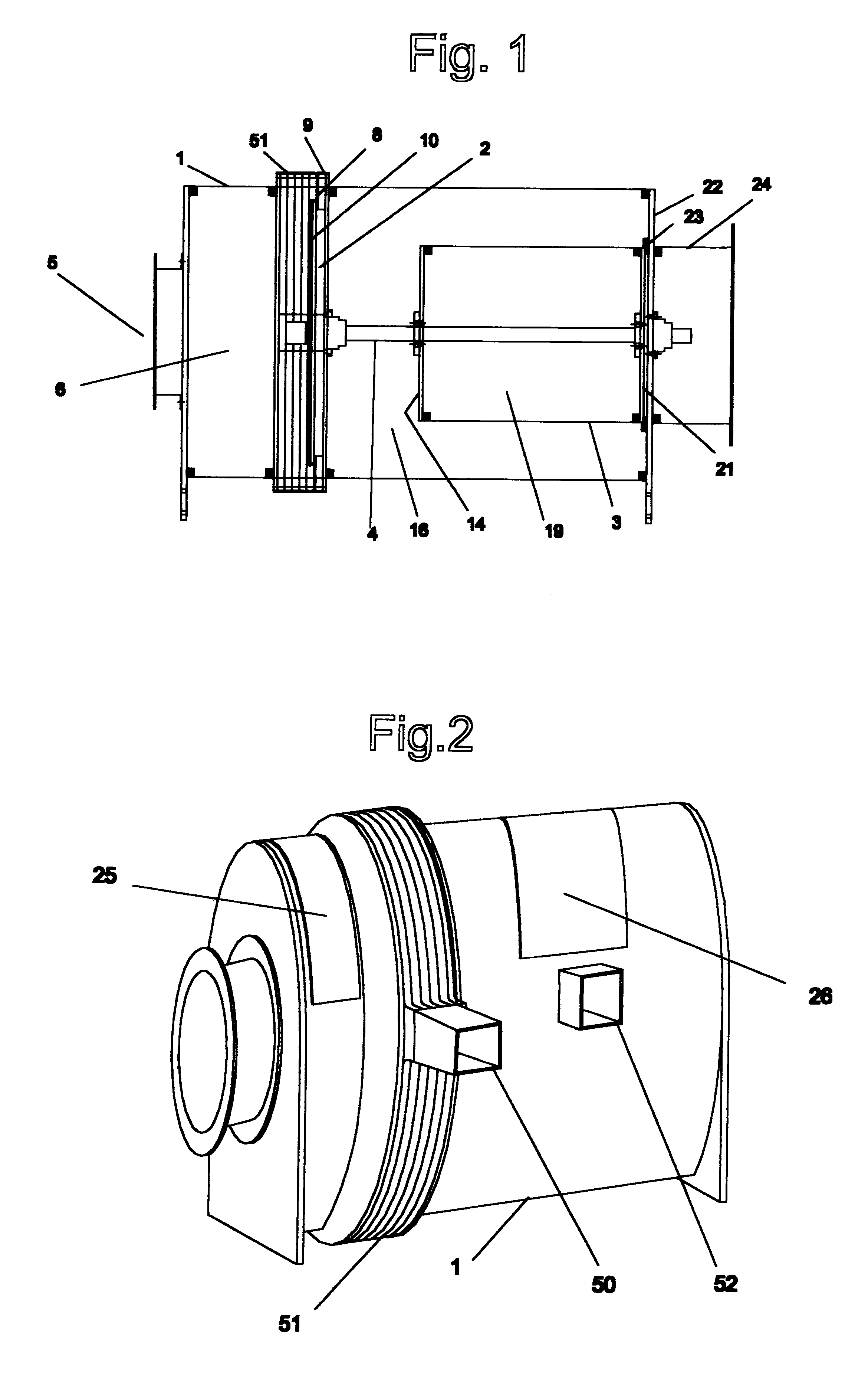Multiple stage high efficiency rotary filter system
a rotary filter and multi-stage technology, applied in the field of unique two-element filter, can solve the problems of high cost, complicated internal construction, health hazards, etc., and achieve the effect of reducing caking or blinding of the filter media, constant negative pressur
- Summary
- Abstract
- Description
- Claims
- Application Information
AI Technical Summary
Benefits of technology
Problems solved by technology
Method used
Image
Examples
Embodiment Construction
Referring to FIG. 1 discloses a filter assembly comprising a tubular filter enclosure 1 containing a rotary disk 2 and a drum filter 3 attached to a common shaft 4 within the enclosure 1. The process air and entrained pulp 5 are introduced into the primary plenum 6, created between the first end of the enclosure 7 and the rotary disk 2. As shown in FIG. 4 it enters through duct 103 from the pad former process suction fan 101 of FIG. 4. which is located between the filter and the pad former 102.
The rotary disk 2 extends radially from the shaft to slightly beyond the inside diameter of the sealing ring 9. A seal is formed by a felt seal 8 fixed to the down stream surface of the disk and between the disk and the sealing ring 9. While the preferred embodiment is described with reference to a seal and sealing ring it is to be understood that a variety of rotary filter disk sealing configurations may be used. The rotary disk 2 is detachably connected to the shaft by a connection means and...
PUM
| Property | Measurement | Unit |
|---|---|---|
| distance | aaaaa | aaaaa |
| distance | aaaaa | aaaaa |
| diameter | aaaaa | aaaaa |
Abstract
Description
Claims
Application Information
 Login to View More
Login to View More - R&D
- Intellectual Property
- Life Sciences
- Materials
- Tech Scout
- Unparalleled Data Quality
- Higher Quality Content
- 60% Fewer Hallucinations
Browse by: Latest US Patents, China's latest patents, Technical Efficacy Thesaurus, Application Domain, Technology Topic, Popular Technical Reports.
© 2025 PatSnap. All rights reserved.Legal|Privacy policy|Modern Slavery Act Transparency Statement|Sitemap|About US| Contact US: help@patsnap.com



